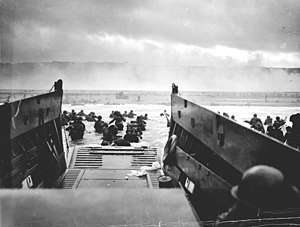|
euroborder - Border museum
|
||||
|
Border resistance war museum
Belfort is twinned with[4]: Delémont, Switzerland,Leonberg, Baden-Württemberg, Germany,
Zaporizhzhia, Ukraine, Stafford, United Kingdom, Tanghin-Dassouri, Burkina Faso All these twin towns are accessible overland departing from the Gare de Belfort.
This was an escape route from Occupied France in World War Two:  Belfort ~ Morvillars ~ Delle ~ Boncourt ~ Porrentruy ~ Delémont Belfort ~ Morvillars ~ Delle ~ Boncourt ~ Porrentruy ~ Delémont Belfort ~ Morvillars ~ Delle ~ Boncourt ~ Porrentruy ~ Delémont Belfort ~ Morvillars ~ Delle ~ Boncourt ~ Porrentruy ~ DelémontFor wartime refugees the border of Delle and Boncourt on the way to Delémont meant life and an escape from death in Nazi occupied France... ... the Delle and Boncourt wartime border resistance museum. Translated by Google: Article from Militaria Helvetica www.militariahelvetica.ch/sjo/documents/Belot-Passeurs-JU.pdf The battle of the Frontiers (WW I) The Nazi German conquest of France and Delle Vichy France and occupied France German occupation of Delle and France in world war II The French resistance Switzerland during the wars and support for refugees in Boncourt The Normandy Landings The Liberation of Paris, France and Delle  Parisians line the Champs Élysées as the French 2e DB tanks and half tracks pass before the Arc de Triomphe on 26 August 1945 ~~~~~~~~~~~~~~~~ Follow the path of the Liberators from Portsmouth D-Day museum.  The D-Day Museum was opened in 1984 to commemorate the 40th anniversary of D-Day. Its centrepiece is the magnificent Overlord Embroidery, a tribute to the sacrifice and heroism of those who took part in Operation Overlord. ~~~~~~~~~~~~~~~ Travel overland from Britain through formerly occupied France to Switzerland... Portsmouth ~ Sword beach ~ Caen Paris ~ Belfort ~ Delle ~ Boncourt ~~~~~~~~~~~~~~~~~~~ The role of the French resistance The French Resistance (French; La Résistance française) is the name used to denote the collection of French resistance movements that fought against the Nazi German occupation of France and against the collaborationist Vichy régime during World War II. Résistance cells were small groups of armed men and women (called the Maquis in rural areas),[2][3] who, in addition to their guerrilla warfare activities, were also publishers of underground newspapers, providers of first-hand intelligence information, and maintainers of escape networks that helped Allied soldiers and airmen trapped behind enemy lines. The men and women of the Résistance came from all economic levels and political leanings of the French society, including émigrés: from conservative Roman Catholics (including priests), from the Jewish community, and from the ranks of liberals, anarchists, and communists. The French Résistance played a significant role in facilitating the Allies' rapid advance through France following the invasion of Normandy on 6 June 1944, and the lesser-known invasion of Provence on 15 August, by providing military intelligence on the German defenses known as the Atlantic Wall and on Wehrmacht deployments and orders of battle. The Résistance also planned, coordinated, and executed acts of sabotage on the electrical power grid, transportation facilities, and telecommunications networks.[4][5] It was also politically and morally important to France, both during the German occupation and for decades afterward, because it provided the country with an inspiring example of the patriotic fulfillment of a national imperative, countering an existential threat to French nationhood. The actions of the Résistance stood in marked contrast to the collaboration of the regime installed at Vichy.[6][7]After the landings in Normandy and Provence, the paramilitary components of the Résistance were organized more formally, into a hierarchy of operational units known, collectively, as the French Forces of the Interior (FFI). Estimated to have a strength of 100,000 in June 1944, the FFI grew rapidly, doubling by the following month, and reaching approximately 400,000 by October of that year.[8] Although the amalgamation of the FFI was, in some cases, fraught with political difficulties, it was ultimately successful, and it allowed France to rebuild a reasonably large army (1.2 million men) by VE Day which came in May 1945.[9] |
|
||





